Your ongoing relationship with your patient makes you the ideal person to monitor substance use and refer to specialty treatment as needed
The latest issue of The Bridge, an e-publication of the National Addiction Technology Transfer Center Network, focused a very meaningful topic for us at IRETA: how can we get folks to actually do SBIRT?
Sure, Screening, Brief Intervention and Referral to Treatment is quite a mouthful to say, but the idea itself is simple–and good. If we can discuss substance use and associated risks before substance use disorders and other harms occur, we can improve public health.
Paul Roman, Editor of The Bridge, says it so well here:
“We wanted to assure that our discussion was close ‘to where the rubber meets the road.’ In other words, hardly anyone would oppose the implementation of SBIRT, and most would agree that it’s a good idea that deserves resources. But we all know that its implementation is far short of ideal and faces a lengthy list of barriers. In fact its implementation may be very much at the “Baby Step” phase of development. How can it move forward?”
And so contributors from a nice range of disciplines hunkered down in that spot, “where the rubber meets the road,” (which is really where the ATTC Network thrives), and drew on their professional experience to put forth ideas about how to get ‘er done, to implement SBIRT, because we know it can be done and we think that it ought to.
The main themes that emerged from The Bridge were:
Education – pre-service information on substance use and the importance of an SBIRT process
Training – on-the-job instruction for the healthcare workforce
Technology – web-based tools, where possible, to save time and make SBIRT a realistic tool in healthcare settings
Organizational investment – buy-in from management as an essential prerequisite for successful training and implementation
Those are types of words you often hear in discussions about changing healthcare practice, but in The Bridge, they’re really brought to life by the authors.
One piece that we took a liking to was written by a social worker from the University of Washington. It was straightforward. Helpful. Digestible. The kind of thing you’d expect from a social worker. It was a list of eight things a primary care physician should know about working with people with substance use disorders.
- They (patients with SUDs) are not, by definition, bad people.
- The most important thing you can do is ask what, and how much, they are using.
- Just as there are diagnostic tests for physical illnesses, there are research-based screening and assessment instruments for substance use.
- Long-term substance use can alter your patient’s brain in ways that make it difficult to discontinue use.
- Treatment for SUDs is effective.
- Once a patient screens positive for a substance use problem, a “warm handoff” to a trained clinician is critical.
- SUDs are often accompanied by other psychiatric disorders or physical health problems.
- A SUD is usually a chronic, rather than acute, condition.
We are extremely grateful to Dr. Elizabeth Wells at the University of Washington, for creating this list and allowing us to use it. Her entire article, which is lengthier (and more informative) is available online.
Recommended Resources
For examples of successful SBIRT programs (there are many!)…
Tune in to upcoming IRETA webinars
View previously-recorded webinars (especially look for those marked “SBIRT in Action,” which are part of a series led by SBIRT implementers)
Visit the Hospital SBIRT Initiative (our partners) for additional recorded and upcoming webinars
Just this week, Addiction Pro published an article that beautifully illustrates an effective hospital SBIRT program






